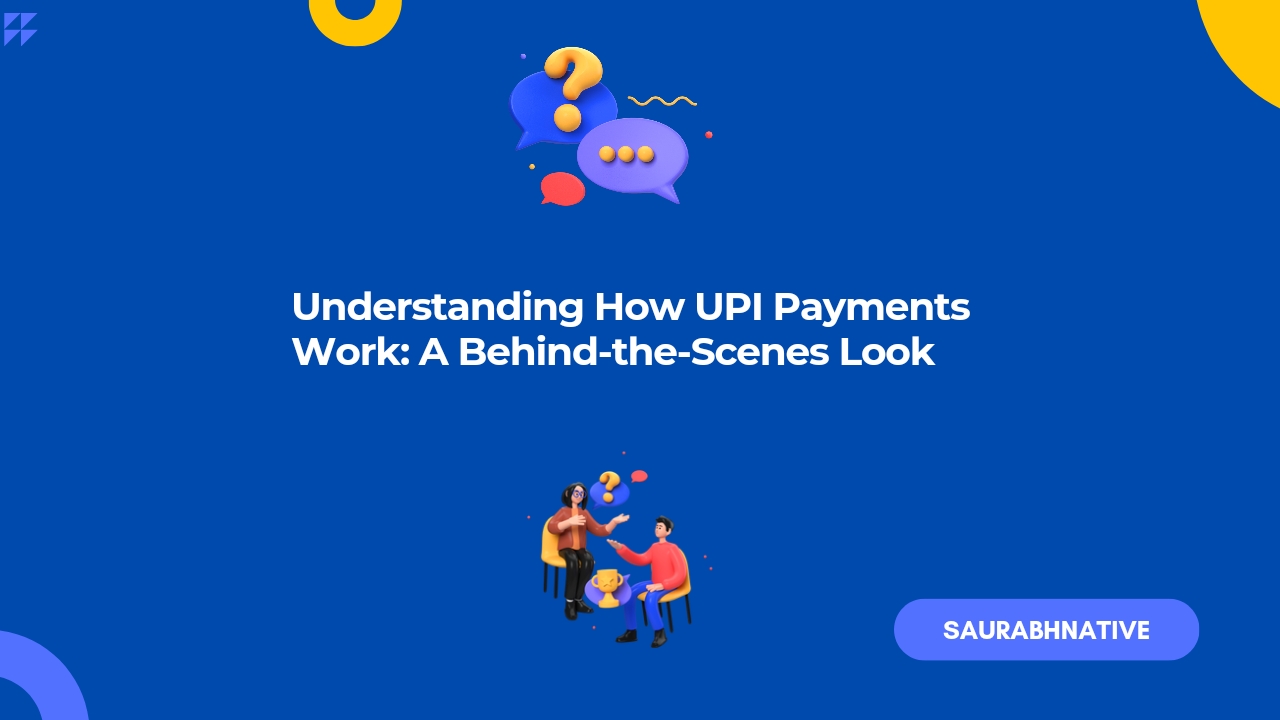Understanding How UPI Payments Work: A Behind-the-Scenes Look
 Saurabh Mhatre
Saurabh Mhatre
UPI payments have significantly eased our daily shopping experience. We don't need to search for exact change or keep too much cash because UPI allows to do payments at local kirana store to daily railway tickets as well. It has significantly improved our payment ecosystem and our life in general.
This has become so popular that UPI is processing a staggering 10 billion transactions every month in India, with a daily volume of over 300 million transactions! That’s almost like every person in the country making two payments daily.
I recently came across a YouTube video explaining its backend system so here's a short information about how it works behind the scenes.
Every UPI transaction is linked to a bank account. When we register on a UPI app, it fetches our account details using our mobile number, which must match the one registered with your bank.
When we initiate a payment, our UPI app sends a request to your bank (the remitter bank).
Your bank verifies the details, like whether you have enough balance and if your UPI PIN is correct.
The request is forwarded via NPCI’s IMPS (Immediate Payment Service) infrastructure to the recipient's bank (the beneficiary bank). NPCI (National Payments Corporation of India) is the governing body that manages the UPI infrastructure
IMPS routes the payment and the money gets credited instantly to the recipient’s account.
If a bank or NPCI fails to respond in a specific time frame, the transaction is marked as failed. Failed transactions are reversed automatically.
Finally, both sender and receiver get confirmation messages.
Going down a bit more technically the backend infrastructure of UPI (Unified Payments Interface) relies heavily on IMPS (Immediate Payment Service) for the real-time settlement of transactions between banks. I had a hunch about this because IMPS allows instant account transfers while transferring money from banking apps.
IMPS is a highly scalable, instant money transfer system that allows interbank transactions 24/7, even on holidays. IMPS operates through a centralized messaging platform provided by NPCI that ensures secure and fast routing of transactions between banks.
IMPS Switch is the central hub managed by NPCI that routes payment requests and messages to the appropriate banks, ensuring the transaction is properly settled.
This same mechanism allows instant UPI transfers as well.
This was a simple short explanation about how it works so next time you make a UPI transaction you know how your money reached the person's phone in seconds 😄
See you all in the next post.
Subscribe to my newsletter
Read articles from Saurabh Mhatre directly inside your inbox. Subscribe to the newsletter, and don't miss out.
Written by

Saurabh Mhatre
Saurabh Mhatre
Software developer residing in Navi Mumbai | Youtuber| Blogger| Connent with me on Twitter